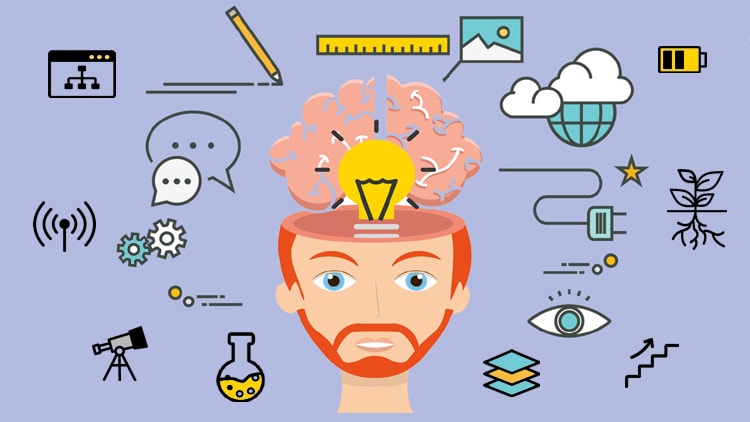With all the buzz these days about design thinking, some of you may be wondering what’s it all about. Is this something designers do? And if so, what can non-designers gain from it?
Design thinking is far more than simply designing products and services; it’s an approach to problem-solving that can be applied to an incredibly wide range of applications.
Design thinking begins and ends with the user in mind. It’s a mindset that continual places the customer at its center. Instead of “design” being applied to a product as an afterthought like picking the colors to paint a house after its been built, design thinking begins before a solution concept is even developed and continues after the product or service is launched.
Traditionally consisting of five steps—Empathize, Define, Ideate, Prototype and Test—design thinking moves design solutions beyond what technology has to offer (feasibility) or what makes business sense for the producer (viability) to what’s best to meet the needs of the user (desirability).
In the Empathize phase, designers, engineers and product managers observe and engage with real users in their natural environments. Imagine your company designs kitchen appliances and your team is considering options to extend your product line. Design thinking practitioners start by visiting kitchens to observe people working. Their goal is to find inconveniences, gaps and “pain points” that need solutions. Very different than traditional design, design thinking does not begin with preconceived solutions or even necessarily the exact problem to address. This approach is what some call the “beginner’s mind”.
In the Define phase, design teams collate and synthesize their observations into a user-centered problem statement. Often, problems are presented with technology-based (“We need to develop smart appliances”) or business-based (“We need to increase commercial oven sales by 12%”) solutions baked in. Design thinkers present their problems in a user-centered and open-ended manner such as “Executive chefs of 4 and 5 -star restaurants need consistent and delay-free processes to meet the quality and output demands of their customers.” By focusing on the real needs of the user, design teams steer away from so called “process designs”—beautiful solutions for problems that don’t exist. Think hoverboards or Microsoft’s Bob.
Designers in the Ideate phase strive first to generate as many potential solutions as possible in a mode termed “divergent thinking”. Then in a mode termed “convergent thinking”, they identify a small selection of those ideas worth further exploration. This process of “quantity leading to quality” is a cornerstone of the design thinking process, and employs such tools as brainstorming, mind mapping and story-boarding.
In the Prototype phase, designers learn more about their users’ desires by developing models with varying levels of fidelity for them to interact with. Early in the design phase, prototypes are low cost and “low-fi”. Sketches, clickable wireframes, and cardboard models are produced quickly and cheaply, yet serve the purpose of helping users visualize a potential solution to their problem. Later in development, prototypes more closely resemble the final product by using the actual materials (in the case of a product) and including most of the intended features. Frequent prototyping is another key strategy of the design thinking process.
The last step then is testing. As designers test their prototypes with actual users, they learn what’s right, what’s wrong, and what’s missing.
While these steps—Empathize, Define, Ideate, Prototype and Test—seem to form a linear process, in practice design thinking is not linear. It’s iterative. While observing real users engage with prototypes, designers begin again by practicing empathy, observing difficulties, and learning more about their user. These new findings lead to more complete problem definitions and higher fidelity prototypes. The design thinking process continues in this iterative manner until the final solution is complete. Yet still, others may pick up that solutions and start the process from scratch.
This design thinking approach to problem solving has been applied to thousands of products and services, and continues to find new applications in healthcare, analytics, web design, manufacturing, and humanitarian relief. Wherever a problem exists, the design thinking approach can add value.
To learn more about the five steps of design thinking, along with tools, strategies and constraints that apply to problem-solving of all kinds, sign up for “An Introduction to Design Thinking”. It features over 2 hours of premium quality video, plus downloads, tips and much more. Sign up today!



